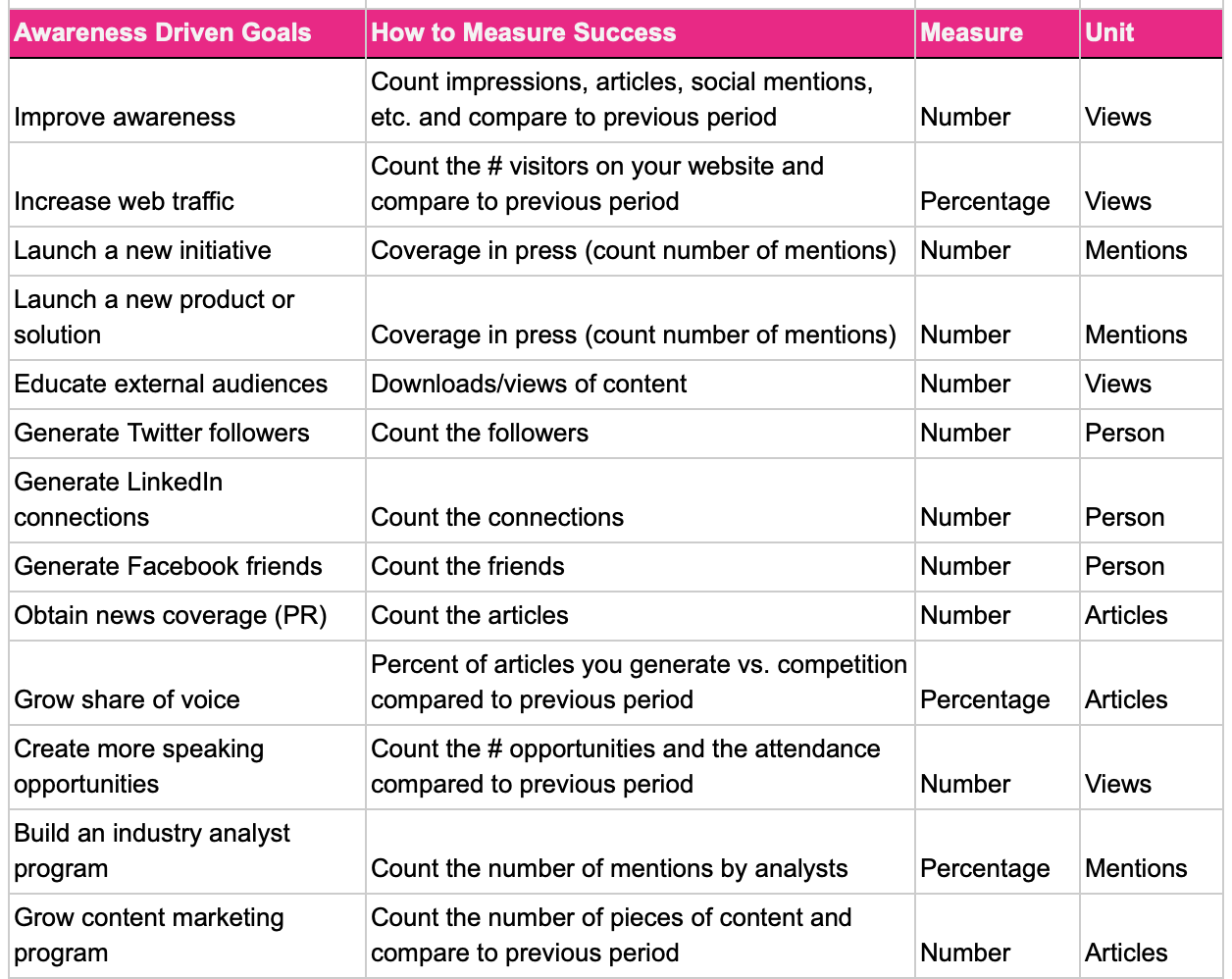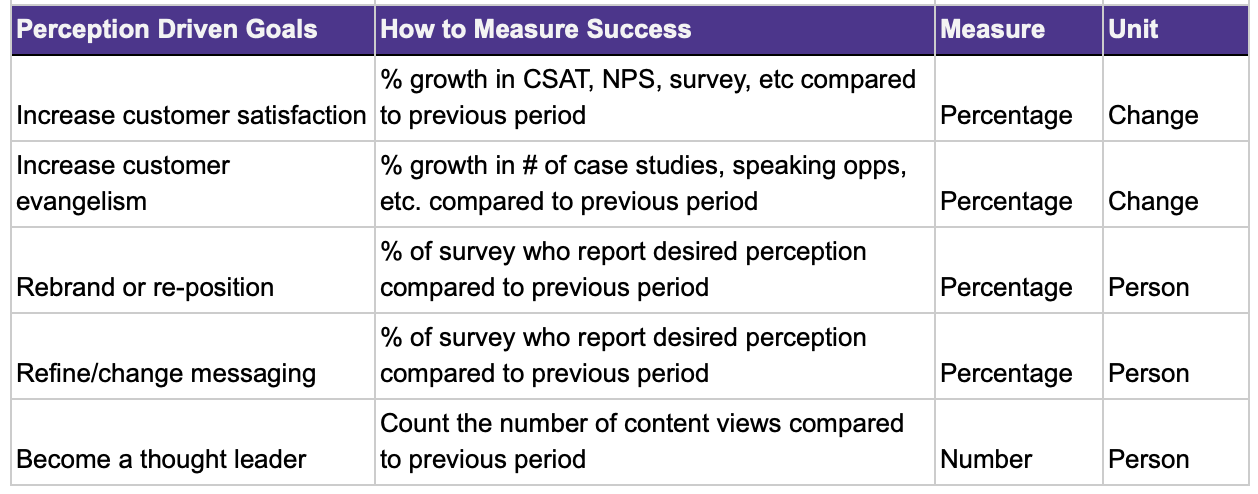The New Marketing ROI: Part 2

In our earlier blog post, we introduced the five steps toward measuring ROI in an effective and repeatable way. This article addresses the first two of our 5: first-order ROI calculations, and careful selection of the requisite metrics. The remainder is covered in part 3.
- Focus on big-picture, first-order ROI calculation
- Carefully select important marketing metrics
- Adopt a consistent approach to measuring and tracking marketing ROI. across your whole marketing plan.
- Baseline your performance so that you can track changes over time.
- Endeavor to find benchmark data to compare vs industry peers, without abandoning your MROI methodology.
If you have identified marketing goals and the marketing organization is aligned around them, you are well placed to select the metrics that will determine the degree to which your goals have been achieved. However, many marketers take a wrong turn in metric selection and end up tracking and reporting on low-impact activity rather than high-impact results. Remember the fallacy of Deming’s warning: ‘What is measured is managed’
First-order ROI
Many marketers – many marketing organizations – measure second-order ROI. It is important to understand the difference between first- and second-order ROI. The table below illustrates the difference between them. The fields in bold are required to measure first-order ROI. The fields in italics impact first-order ROI, but their measurement does not capture or communicate ROI.
We will invest X dollars in
- Individual activities
(write a piece of content, design a logo, hire an agency, buy some media)
- Which roll up to marketing messages and deliverables
(digital assets, brand assets, eBooks, white papers, advertisements)
- Which are included in a campaign that is run
(TV campaign, integrated marketing campaign, customer event)
- To a targeted set of customers and prospects
(a market segment, installed-base customers, recent college graduates living within 10 miles of Chicago)
- By a target date
(July 1, end of Q3)
- Over a defined set of marketing channels
( TV, radio, digital, print)
- Until a certain deadline is met
(ad budget is consumed, target metric achieved, Christmas)
in order to achieve measure Y at volume Z.
First-order ROI questions ask, “Did we achieve our target measure at the desired volumes within our target budget?” and then ask whether it was worth it. For example, if we generate $1M of bookings from a campaign investment of $200,000, it’s a 5x ROI. It’s pretty clear that it was worth it.
Second-order ROI is replete with did-we-do-it (DWDI) metrics. These tend to be focused on activities rather than outcomes. They tend to be easy to measure too, which makes them seem attractive. But the siren song of DWDI metrics is foiled by the fact that they don’t tell you anything about the business outcome of your campaign. If you ask a colleague how their campaign went and you hear an answer like, “It launched on time with finalized positioning, and all the digital assets were completed by the agency, to spec,” they might be giving you DWDI metrics. What you really want to hear is something more like, “We’ve used 90% of our budget and we’ve achieved 60% of our Sales-Qualified Lead (SQL) target so far, which puts us ahead of schedule. We’re forecasting that we’ll overperform with this campaign.” then you are likely tracking first-order ROI metrics, because you will be able to calculate your cost per SQL, the average financial value of an SQL, and you will be able to compare it to other campaigns to assess both relative and absolute performance.
Meaningful metrics
Many marketers have written about how difficult it can be to assess the ROI impact of marketing activities higher up the funnel, such as social media likes. Earlier this year we posted a blog series, covering the importance of goals-based marketing. We argue that there are really only three overarching objectives to marketing activity: improving sales, awareness, or perception.
Based on that, below is a table showing the most common marketing goals, and how to measure success—both the measure (number, percentage) and the unit of marketing measurement (customers, deals, lead).
Key metrics for common marketing goals
Note: LPO = lead, prospect or opportunity



Continuous versus Binary Metrics
You may have noticed that 100% of the metrics above are continuous, meaning they’re countable, have no upper bound, and they’re not binary (answered by yes/no).
Binary criteria are indicative of DWDI metrics (Did we launch on time? Was the collateral written? Did we approve the agency’s recommendations?) DWDI metrics often belong in a project plan, but they normally do not belong in your ROI analysis.
Metrics Categories
You may also have noticed in the table above that the number of different types of units to be measured is rather limited. This means that there are relatively few things to measure to get to the core of your ROI calculations. It’s not necessarily easy to measure them all the time, but it’s important to know the universe within which you’re operating.
As the list below illustrates, the only units of measurement that are required to assess the large spread of typical marketing goals can be captured by the 10 following units of measurement:
- Number of articles
- Number of customer
- Number of leads (or prospects or opportunities, depending on your definitions)
- Currency amount (revenue, bookings, pipeline)
- Number of days (deal cycle)
- Number of deals (new win, upsell, cross-sell)
- Number of mentions
- Percentage change (growth- NPS score or decline- churn rate)
- Number of people (survey or focus group respondents, social network connections)
- Number of views (pages, articles, white papers, gated downloads)
Prioritizing just 10 units of measurement is simplifying. And to put a finer point on it, there are five units for sales goals, four for awareness goals, and just two for perception goals.

While we don’t claim this is an exhaustive list of all possible marketing metrics to inform first-order ROI, if you set up systems to measure these, and they’re tied to well-structured goals, then you are well-positioned to capture first-order ROI metrics for a meaningful proportion of your marketing efforts.
Tying metrics to ROI
Now that we have our goals and we’ve selected metrics to measure those goals, we need to establish the value of those metrics. What is it worth to achieve one of the outcomes tied to our metrics?
Some of these are simple. For example, currency amount may be mapped to revenue, bookings or pipeline. For the sake of simplicity, let’s assume that the revenue we generate is exactly equivalent to the customer’s lifetime value (LTV). Hopefully, it won’t be the case that LTV is equal to one-time revenue, but it helps keep things simple for now.
If you know the conversion rates for our pipeline and bookings, then it is easy to map metrics to business value. Let’s imagine that there is a 10% conversion rate of pipeline to revenue, and 95% of bookings to revenue. Then, you can state that:
- $1,000,000 of revenue = $1,000,000 of business value
- $1,000,000 of bookings = $950,000 of business value
- $1,000,000 of pipeline = $100,000 of business value
Spending $100,000 to generate $1,000,000 of revenue or bookings is a pretty great investment. Spending that much to generate $1,000,000 of pipeline is a pretty terrible investment because the best possible outcome is the same as the investment. And the outcome is not guaranteed. So, you’d be better off spending the $100,000 on something else.
I started with revenue because it represents the most direct line connection to your marketing investment. Some metrics are closer to revenue, and some are further away. In the next blog of this series, I introduce a new model to reliably measure first-order ROI from any of the metrics we have covered in this article.
Learn more about Planful’s marketing ROI tool, its capabilities, and how it helps marketers and CMOs.
——————————————————————————————————————————————————————-
 Dan Faulkner is the CTO of Planful, a marketing planning software. Dan has degrees in speech and language processing and marketing. He got his marketing degree after running research for text-to-speech synthesis research at SpeechWorks (now Nuance) and must have been looking for something easy to do. You can follow him on Twitter and LinkedIn.
Dan Faulkner is the CTO of Planful, a marketing planning software. Dan has degrees in speech and language processing and marketing. He got his marketing degree after running research for text-to-speech synthesis research at SpeechWorks (now Nuance) and must have been looking for something easy to do. You can follow him on Twitter and LinkedIn.
Latest Posts
Blogs
Interviews, tips, guides, industry best practices, and news.
